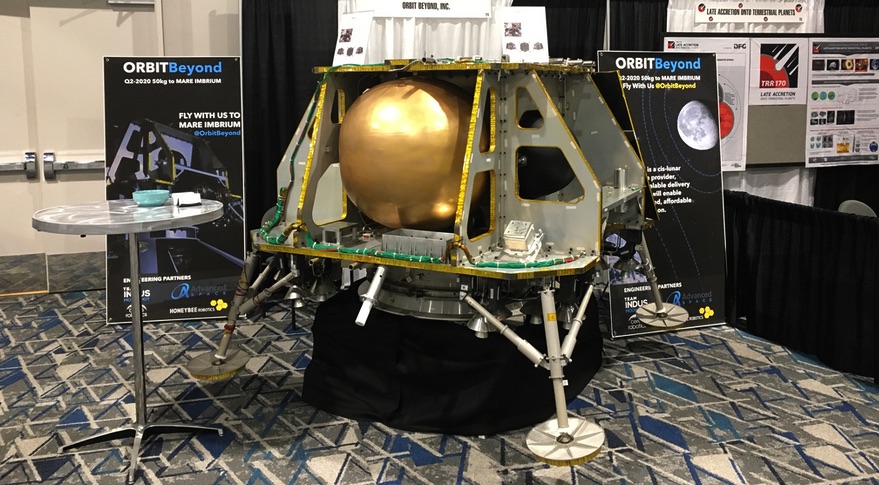WASHINGTON — NASA’s inspector general warned in a recent report that the agency’s planetary science division was taking “undue risk” in its current approach to a commercial lunar transportation program.
The Office of Inspector General (OIG), in an audit of the agency’s planetary science division released Sept. 16, highlighted several issues with the Commercial Lunar Payload Services (CLPS) program established in 2018 to buy payload space on commercially developed lunar landers to transport science and technology demonstration payloads to the surface of the moon.
“If not adequately addressed, these risks could result in mission failure and the loss of expensive NASA payloads and significant taxpayer investment,” the report noted.
The OIG report highlighted several issues with the CLPS program. It criticized NASA for failing to perform due diligence on companies selected for CLPS awards as required under Federal Acquisition Regulations (FAR). “Specifically, NASA contracting personnel did not obtain sufficient information to confirm the prospective contractors met FAR standards related to their past performance and ability to obtain financial resources,” the report stated.
This has already caused a problem for NASA. Orbit Beyond, one of nine companies selected to join the CLPS program in November 2018, received a task order the following May, only to bow out two months later because of what it termed “internal corporate challenges.” Neither the company nor NASA elaborated on the issues that prevented the company from carrying out the task order.
According to the OIG report, Axiom Research Labs, the Indian company that licensed to Orbit Beyond intellectual property for the lander based on a design Axiom developed for the Team Indus lander in the Google Lunar X Prize competition, sought “a corporate restructuring that would give Axiom a majority control” of Orbit Beyond. That would violate NASA requirements that Orbit Beyond have majority domestic ownership, but without the restructuring Axiom would not provide the engineering information needed for building the lander. Orbit Beyond remains part of the CLPS program but has not won any subsequent awards.
The report also criticizes the inclusion of two other companies in the CLPS program. Firefly Aerospace was created when Noosphere Ventures bought the assets of the bankrupt Firefly Space Systems, which had a NASA launch contract it could not carry out. A bankruptcy judge provided NASA with just $1,500 of $1.1 million of advance payments due back to the agency when that contract was canceled. Moon Express had also experienced financial problems, such as losing a lawsuit against Intuitive Machines and the cancellation of a lease at the Kennedy Space Center for nonpayment of rent. Both companies remain part of CLPS but have not won any task orders.
The report also criticized NASA for failing to require safety and mission assurance plans for the missions it has awarded under CLPS. NASA officials told OIG that they treated the CLPS contracts “akin to a delivery by common carrier, similar to an express cargo service,” and thus believed such plans were not necessary.
OIG disagreed, given the complexity of the lander and the value of the CLPS tasks orders that far exceeds the threshold for such plans. “Without proper evaluation and oversight of risk, the aggressive approach of CLPS may result in significant additional risks, including mission failure and the loss of payloads,” the report stated.
Another issue was a lack of common interfaces for payloads among the 14 companies that are now part of the CLPS program. The lack of interface standards, OIG argued, could lead to cost and schedule problems as well as increased risk the payloads will not operate as expected once on the moon.
Since the beginnings of the CLPS program, NASA has emphasized the high-risk nature of the program, using to this day the phrase “shots on goal” to refer to such missions, with the implication that not all shots will get into the goal. That risk, though, has largely focused on the technical issues of landing on the moon. To date, only the United States, China and the former Soviet Union have soft-landed spacecraft on the lunar surface; last year, missions by Israel and India crashed attempting to land there.
OIG offered three CLPS-specific recommendations in its report, regarding development of common interfaces, periodic reviews of past performance and financial capabilities of CLPS companies, and quality assurance plans for CLPS missions. NASA, in a response included in the report, accepted all three recommendations and estimated they would be implemented by the end of June 2021.
The assessment of CLPS was not the only issue the OIG audit found with the planetary science division. It noted that increasing costs of many of its missions could reduce the number of future missions it can carry out, as well as concerns about the level of funding for technology development as well as operation of the Deep Space Network to enable such missions. It also warned that the funding for its Near Earth Object Observation program, intended to discover and track near Earth asteroids, was not sufficient to meet the goals set by Congress 15 years ago to identify 90% of the potentially hazardous objects at least 140 meters across.
